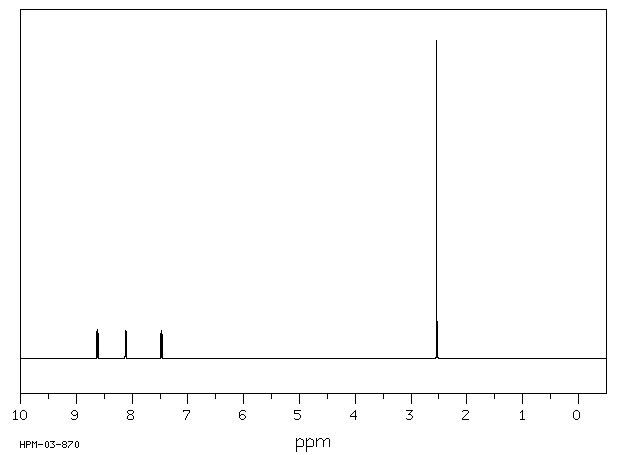1-硒吩-2-基-乙酮 | 15429-03-5
中文名称
1-硒吩-2-基-乙酮
中文别名
——
英文名称
2-acetylselenophene
英文别名
Ethanone, 1-selenophene-2-yl-;1-selenophen-2-ylethanone
CAS
15429-03-5
化学式
C6H6OSe
mdl
——
分子量
173.073
InChiKey
ZGPHGDUKOZWMBI-UHFFFAOYSA-N
BEILSTEIN
——
EINECS
——
-
物化性质
-
计算性质
-
ADMET
-
安全信息
-
SDS
-
制备方法与用途
-
上下游信息
-
文献信息
-
表征谱图
-
同类化合物
-
相关功能分类
-
相关结构分类
计算性质
-
辛醇/水分配系数(LogP):0.95
-
重原子数:8
-
可旋转键数:1
-
环数:1.0
-
sp3杂化的碳原子比例:0.17
-
拓扑面积:17.1
-
氢给体数:0
-
氢受体数:1
安全信息
-
海关编码:2914190090
SDS
上下游信息
-
下游产品
中文名称 英文名称 CAS号 化学式 分子量 2-溴-1-硒吩-2-基乙酮 2-bromoacetylselenophene 38025-30-8 C6H5BrOSe 251.969 1-(5-溴硒吩-2-基)-乙酮 1-(5-bromoselenophen-2-yl)ethanone 31432-41-4 C6H5BrOSe 251.969 —— 1-(2-selenophenyl)-1,3-butanedione 1680-37-1 C8H8O2Se 215.11
反应信息
-
作为反应物:描述:参考文献:名称:Synthesis of chalcone analogs and derivatives of 2-pyrazoline from 3-formylindole摘要:DOI:10.1007/bf00943916
-
作为产物:描述:参考文献:名称:3-乙酰基-2,5-二甲基呋喃和2-乙酰硒吩的烯醇化反应动力学摘要:标题化合物的烯醇化反应的速率常数是通过它们在 25 °C 下在水中、几种缓冲液、稀盐酸、稀氢氧化钠和一些金属离子盐存在下的卤化速率来测量的。结果已与先前从苯乙酮和许多其他乙酰基杂环的相应反应中获得的结果进行了比较。杂原子的电负性和杂环的“π-过度”性质似乎是决定酸催化反应中相对反应性的主要因素。Bronsted β 值和同位素效应 kH/kD 表明所研究的乙酰杂环比一般碱催化反应中的苯乙酮更对称。金属活化因子(MAF),即DOI:10.1002/(sici)1099-0690(199809)1998:9<1867::aid-ejoc1867>3.0.co;2-m
文献信息
-
Palladium‐Catalyzed Direct Cross‐Dehydrogenative Alkynylation of Selenophenes作者:Shi‐Yen Chen、Yan‐Hsiang Tseng、Chia‐Fang Lu、Chun‐Yao Chuang、Yen‐Ju ChengDOI:10.1002/adsc.202100741日期:2021.10.5A palladium-catalyzed (Pd(PPh3)4/Ag2O/PivOH) C2-regioselective direct dehydrogenative alkynylation of unsubstituted selenophene was achieved. The selenophenes substituted with R1 groups at 2-position can be C5-alkynylated with a variety of 4-substituted phenylacetylenes (R2 groups). The R1 and R2 can be either electron-withdrawing or electron-donating groups, demonstrating a wide range of substrate
-
SELENOPHENE COMPOUNDS申请人:Shia Kak-Shan公开号:US20080021031A1公开(公告)日:2008-01-24This invention relates to selenophene compounds of formula (I) shown below. Each variable in formula (I) is defined in the specification. These compounds can be used to treat cannabinoid-receptor mediated disorders.
-
A Cyclic Vicinal Bis(tetraketone) and Structural Investigations of Formoins作者:Matthias Peter、Rolf Gleiter、Frank Rominger、Thomas OeserDOI:10.1002/ejoc.200400157日期:2004.8Investigations of simple formoins such as 2,5-bis(1,1-dimethyl-2-phenylethyl)-2,4-dihydroxyfuran-3(2H)-one (17), benzoylformoin (18), p-toluoylformoin (19), pivaloylformoin (20), and the 2,4-dihydroxy-2,5-bis(heterocycl-2-yl)furan-3-ones 21−23 (heterocycle = furan, thiophene, selenophene) by NMR spectroscopy in DMSO showed the dihydroxyfuranone skeleton and not an enediol structure. The formoin 17 was oxidized2,5-双(1,1-二甲基-2-苯乙基)-2,4-二羟基呋喃-3(2H)-one (17)、苯甲酰甲醛 (18)、对甲苯甲酰甲醛 (19) 等简单甲醛的研究、新戊酰福尔默 (20) 和 2,4-二羟基-2,5-双(杂环-2-基)呋喃-3-酮 21-23(杂环 = 呋喃、噻吩、硒吩)通过 DMSO 中的 NMR 光谱显示二羟基呋喃酮骨架而不是烯二醇结构。甲醛 17 被氧化成相应的四酮 10。 1,4-双 (2,2 二甲基-3,4-二氧丁基) 苯 (27) 的分子间双安息香缩合以低收率提供了双 (甲醛) 29,这可以被氧化以提供 2,2,2',2',7,7,7',7'-octamethyl[8.8]paracyclophan-3,3',4,4'5,5'6,6' -辛酮 (9)。报告了 17 和 29 的分子结构、10 的一水合物 (30) 以及 9 (31) 的二水合物。(© Wiley-VCH
-
Hetero-Diels–Alder reactions of hetaryl thiochalcones with acetylenic dienophiles作者:Grzegorz Mlostoń、Paulina Grzelak、Heinz HeimgartnerDOI:10.1080/17415993.2016.1230857日期:2017.1.2Hetaryl-substituted thiochalcones react with acetylenic mono- and diesters in the THF solution in the presence of LiClO4 at 65°C to give, after 24 h, 4H-thiopyran carboxylates and dicarboxylates, respectively, in moderate to good yields. The same reactions were performed also in the THF solution without a catalyst under microwave irradiation. In that case, the reaction time was reduced to three minutes and
-
Selenoyl-trifluoroacetone: Synthesis, properties, and complexation ability towards trivalent rare-earth ions作者:Maxim A. Lutoshkin、Ilya V. TaydakovDOI:10.1016/j.poly.2021.115383日期:2021.10using NMR, EI-MS, and elemental analysis. Spectral, acid-base, complexing, and keto-enol parameters were studied under various conditions. Received values of dissociation and protonation constants characterize selenoyltrifluroracetone as a stronger acid and stronger base than acetylacetone. The aqueous chelation with sixteen rare-earth metals has been studied in acetate and glycine buffer media at I = 0已经合成了含硒的苯酰三氟丙酮类似物,并首先通过紫外-可见光和核磁共振光谱进行了表征。硒酰三氟丙酮的合成通过两步程序进行:硒酚的乙酰化和 2-乙酰硒酚与三氟乙酸乙酯的相互作用。所得产物的结构已通过NMR、EI-MS和元素分析得到证实。在各种条件下研究了光谱、酸碱、络合和酮-烯醇参数。解离和质子化常数的接收值将硒酰三氟丙酮表征为比乙酰丙酮更强的酸和更强的碱。在醋酸盐和甘氨酸缓冲介质中,在 I = 0.5 M (NaCl) 下研究了与 16 种稀土金属的水性螯合。logK 的值从 La(III) 到 Lu(III) 非单调增加,并且位于 4.5-11.5 对数单位的范围内。大多数确定的形成常数高于噻吩酰基和糠酰基三氟丙酮稀土金属配合物的类似值。使用 DFT 和 TD-DFT 方法模拟热力学和光谱参数。
表征谱图
-
氢谱1HNMR
-
质谱MS
-
碳谱13CNMR
-
红外IR
-
拉曼Raman
-
峰位数据
-
峰位匹配
-
表征信息
同类化合物
(反式)-4-壬烯醛
(s)-2,3-二羟基丙酸甲酯
([1-(甲氧基甲基)-1H-1,2,4-三唑-5-基](苯基)甲酮)
(Z)-4-辛烯醛
(S)-氨基甲酸酯β-D-O-葡糖醛酸
(S)-3-(((2,2-二氟-1-羟基-7-(甲基磺酰基)-2,3-二氢-1H-茚满-4-基)氧基)-5-氟苄腈
(R)-氨基甲酸酯β-D-O-葡糖醛酸
(5,5-二甲基-2-(哌啶-2-基)环己烷-1,3-二酮)
(2,5-二氟苯基)-4-哌啶基-甲酮
龙胆苦苷
龙胆二糖甲乙酮氰醇(P)
龙胆二糖丙酮氰醇(P)
龙胆三糖
龙涎酮
齐罗硅酮
齐留通beta-D-葡糖苷酸
鼠李糖
黑芥子苷单钾盐
黑海棉酸钠盐
黑木金合欢素
黑曲霉三糖
黑介子苷
黄尿酸8-O-葡糖苷
麻西那霉素II
麦迪霉素
麦芽糖脎
麦芽糖基海藻糖
麦芽糖1-磷酸酯
麦芽糖
麦芽四糖醇
麦芽四糖
麦芽十糖
麦芽六糖
麦芽五糖水合物
麦芽五糖
麦芽五糖
麦芽五糖
麦芽三糖醇
麦芽三糖
麦芽三糖
麦芽三塘水合
麦芽七糖水合物
麦芽七糖
麦法朵
麦可酚酸-酰基-Β-D-葡糖苷酸
麦利查咪
麝香酮
鹤草酚
鸢尾酚酮 3-C-beta-D-吡喃葡萄糖苷
鸡矢藤苷







